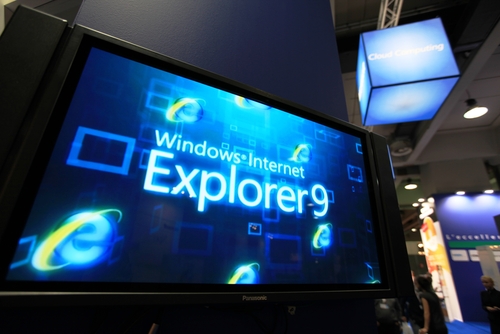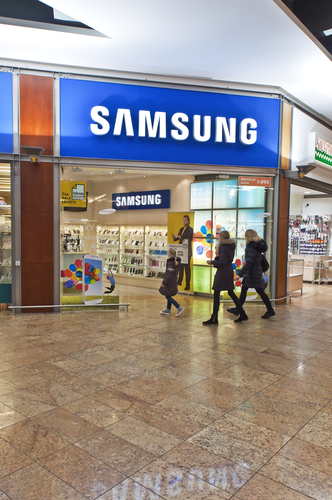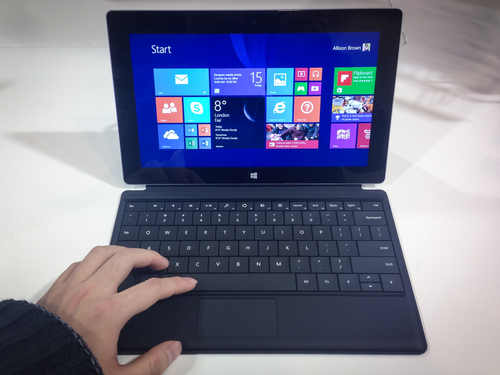February 19th, 2014

The year 2001 may not seem that long ago to some, but for Microsoft, it was an eternity ago. Windows XP launched in October of 2001 and since then, Microsoft has moved on to three more operating systems, Windows Vista, 7 and 8. In April, support for Windows XP will end and users will be left to choose between upgrading to a newer operating system, or using one with no hope of bug fixes or security patches. At Information Week, Jeff Bertolucci published a list of what XP users need to know ahead of the April expiration date and what they should be thinking about.
- Windows XP will still run
Just because Microsoft will no longer support XP, it doesn’t mean that your computer running XP will no longer work. The only change will be that Microsoft won’t be releasing updates. That means newer devices won’t be compatible with XP machines. It also means you’ll become more vulnerable to attacks as vulnerabilities are uncovered but unpatched.
- Office and Exchange 2003 also expiring
Lost in the news of XP’s end of support is the end of support for both Office 2003 and Exchange 2003. Online content, security updates and bug fixes will no longer be released for these popular applications after April 8th. If you’re unsure of what version of Office you’re using, go to the ‘Help’ menu in Microsoft Word and select “About Microsoft Office Word”.
- Security Essentials gets a reprieve
Microsoft Security Essentials is far from a complete malware protection program, but Microsoft won’t be continuing updates for Security Essentials on XP until July of 2015. That, in addition to an up to date antivirus program, will help keep you more secure even after the XP updates cease.
- Windows 7 features Windows XP mode
If you decide to update to Windows 7, there’s an XP mode to help make the transition easier. This allows you to run applications designed for XP effectively. A separate window will open on the desktop, which will be a fully functional version of XP. There’s one catch, however. XP mode also will stop getting support in April. It will still be available, but it won’t be getting updates and patches.
- Compatibility troubleshooting
The hesitation for many users in upgrading their operating system is a concern that programs they consistently use won’t be compatible with a newer version of Windows. Microsoft has publicly stated that they can’t guarantee that programs that ran on XP will work in Windows 7 or 8. There is, however, a troubleshooting tool to help you adjust an application’s settings to make it work. To access the tool, right click on the program’s icon and select “troubleshoot compatibility”.
Hard drive space has increased exponentially since the days when Windows XP ruled the world. Now, Windows 8.1 requires at least 16 GB of free space for 32-bit systems and 20 GB of free space for 64-bit systems. This free space is allocated for updates. If you’re planning to upgrade from XP to 8.1, you’ll have to make sure you have enough space on your hard drive to make it work.
If you need help upgrading your personal computer or an entire office of XP machines, or if you have computer issues that extend beyond an out-dated operating system, call Geek Rescue at 918-369-4335.
February 14th, 2014

This week, in the monthly edition of Patch Tuesday, Microsoft released a number of patches to fix vulnerabilities in Internet Explorer. Just days later, Microsoft has confirmed that a zero-day exploit is being used in an active attack campaign that targets IE 9 and 10. Brandan Blevins of Search Security reports more details.
The label ‘zero-day’ categorizes attacks that exploit vulnerabilities before a patch can be created. By definition, this is a case where attackers learned of a vulnerability before the developers.
The attack is also categorized as a “watering hole attack”, which means that a specific website is being targeted in order to infect the group that typically visits that site. In this case, the U.S. Veterans of Foreign Wars’ website has its HTML code tampered with in order to load a malicious web page for visitors. When that page loads, malware is downloaded and executed on the user’s machine.
The attack exploits what’s being called the “use-after-free” bug, which allows for one byte of memory to be modified at “an arbitrary address”.
Microsoft has not announced whether a patch will be rushed out to fix the vulnerability or if users will have to wait for March’s Patch Tuesday. In the meantime, there are two options for IE 9 and 10 users.
One is a complicated fix using Microsoft’s Enhanced Mitigation Toolkit Experience.
A simpler fix is to stop using IE 9 and 10 until a patch is released. Either change browsers to Chrome, Firefox or another popular choice, or upgrade Internet Explorer to version 11.
If your computer has already been infected with malware, bring it to Geek Rescue, or call us at 918-369-4335.
February 11th, 2014

When buying new servers for your business, there are a number of factors to consider to ensure that you get exactly what you need. A new trend being adopted by IBM and HP could add some confusion and frustration to the process. As David King of IT Manager Daily reports, HP recently announced that firmware updates will only be available for its users who are under warranty or a support agreement. IBM has already made that change in policy.
This news means that in order to secure your servers, you’ll have to pay more than ever before. For small business who have already stretched their IT budget thin, this could be a real problem. To save yourself some trouble, and possibly some money, here’s what you need to consider before buying a server.
While IBM’s and HP’s service comes with an expiration date that requires you to pay more for continued support, other companies like Dell and Cisco have no such stipulations. That’s not to say that one company is a better option than another. Rather, the point is that a seemingly cheap server with a limited warranty may end up being more costly than a more expensive server with an unlimited service plan. Before making a purchase, the terms of service needs to be among your first concerns.
If you already have servers that will soon lose their support, or you decide that expiring support isn’t a deterrent for buying a server, there are options for when your warranty finally expires. Before you renew with the server’s manufacturer, check around with third party support companies that may offer better service for less money. A local company may be able to offer support that’s more personalized to your specific needs, rather than the one size fits all approach of the giants.
In order to recoup some of the money spent on new servers, many companies plan to resell them when they’re no longer needed. The value of old servers could take a major hit if the manufacturer no longer covers them. This suggests that servers from manufacturer’s with unlimited service plans will enjoy a higher resale value than those with an expiring service plan. Keep that in mind when you’re purchasing a server if you plan to sell it later.
If you have questions about your server needs, want to explore other options for support or would like to store your company’s data on off-site servers you don’t have to manage yourself, call Geek Rescue at 918-369-4335.
February 10th, 2014

The Samsung Galaxy S4 is among the top performing and best selling Android smartphones on the market. Because of the success of its predecessor, the GS5’s release has been eagerly awaited. That wait will be over in two weeks when Samsung unveils their newest smartphone at an even in Barcelona. In the meantime, details and specifications are already leaking out, although as of now all of the information is considered to be rumor. At Yahoo News, Lisa Eadicicco reports the latest details learned about the GS5 and how it compares to other flagship smartphones.
The Galaxy S5 is expected to continue Samsung’s continuous improvements in the camera department. The GS4 jumped from an 8-megapixel camera to 13-megapixels. The GS5 is expected to debut with a 16-megapixel camera. Without knowing any other specifics about the camera, that at least puts it in the conversation with the best smartphone cameras available.
Other specifications are a little disappointing. The 1080p display and Qualcomm Snapdragon 800 processor aren’t big improvements on the GS4, which also features a 1080p display and a Snapdragon 600 processor. There have been suggestions that the GS5 will include both a low-end and high-end model, which could mean that these are the minimum specifications.
Even with these specifications, however, the GS5 scored impressively in general performance testing. In the AnTuTu benchmark, which is a standard way to measure performance, the GS5 outscored the LG G2, HTC One and GS4. It also nearly doubled the average score for smartphones.
Official details about the Galaxy S5 won’t be announced until February 24th, but based on what’s already been leaked, it’ll be a smartphone worth keeping tabs on.
Whether you have the latest and greatest smartphone, or are sticking with an older model, Geek Rescue fixes any issues that come up. For hardware, software, malware or any other problems, call us at 918-369-4335.
February 10th, 2014

Apple’s mobile operating system, iOS 7, was released in September and since then, more than 80-percent of users with supported devices have adopted it. After a few rounds of beta updates, Apple seems poised to release the first significant update to iOS 7. As JC Torres of Slash Gear reports, iOS 7.1 is rumored to be released in March.
Don’t expect 7.1 to break any new ground, however. For the most part, the update is being released to fix common bugs and functionality issues users have reported, not to improve existing features or introduce many new features.
You can expect a few visual tweaks. The slide to unlock, dialer, keyboard and music functions are all expected to look a little different in iOS 7.1. When sliding to turn off your iPhone, you’ll rounded slider at the top of your screen and a white cancel button at the bottom. Slight adjustments to the slide to unlock screen and animation are also being made.
When answering calls, you’ll have the option to accept or decline in green and red circles, instead of rectangles. You’ll also have actual icons above those options for ‘Remind Me’ or ‘Message’.
The dialer has become visually more attractive with color gradients and accents. The large green ‘Call’ rectangle has also been replaced with a smaller, circular phone icon.
In the music app, users may notice more prominent buttons for repeat and shuffle options. Those are now ‘Repeat Song’ and ‘Shuffle All’ and have a pink background behind them.
Another minor change comes in the keyboard, where the shift and delete buttons are now more prominent and easier to discern.
There are also new options in Calendar and animation tweaks to the Control Center and Messages.
Perhaps the most exciting change coming wrapped in iOS 7.1 is iOS in the Car. This new features allows you to connect your iPhone to compatible cars and display iOS content like maps, directions and messages on the navigation screen.
The other exciting news surrounding the coming iOS update is a promised fix for the infamous ‘white screen of death’. This glitch has been causing many users to suffer unexpected reboots and crashes. Users of the iPhone 5S, iPad mini with Retina and iPad Air have all reported this problem.
If your Apple device’s problems can’t be fixed by an iOS update, call Geek Rescue at 918-369-4335 or come see us. We fix hardware and software problems, as well as malware infections and more.
February 3rd, 2014

A planned update to the Windows 8.1 operating system is planned to be released in March, but an early, unfinished version has already leaked online. As Wayne Williams of BetaNews reports, this leaked version reveals many features the official update will offer to users.
Many experts surmised this would be part of the official update and it appears they were correct. Any app downloaded from the official Windows Store can now be pinned to the taskbar. To do so, users only need to right click on the app, or holding down on it if you are using a touchscreen, then select “pin to taskbar”. You can also set Windows to display all currently running apps on the taskbar.
On the Start screen, next to your username, this update includes two new buttons. First, a search button allows for easy access to the search function. The second is a Power button. From here, you can shut down or restart. You can also put your computer to sleep.
Those using a mouse can right click apps and have access to a menu full of options. Pin or unpin from the Start screen or taskbar, resize its tile or uninstall completely. There’s also now an alphabetical view on the Apps screen that allows you to filter apps by letter. Any app that comes from the official Windows Store now has a title bar to make it easier to minimize, close or rearrange those windows. Also, for the first time you can access the taskbar even while running an app.
One popular rumor was that part of the official update would make booting to the desktop the default behavior, but that isn’t reflected in the leaked version. There’s still a chance that the official update will include that change, however.
Regardless of what operating system you use, when your computer has issues, bring it to Geek Rescue or call us at 918-369-4335.
January 23rd, 2014

Apple’s latest operating system, iOS 7, was initially made available to users in September. Since then, there have been a number of complaints, but overall it’s been accepted positively. That is, except for one incessant bug that has plagued a number of users and has no fix. As Adario Strange reports at Mashable, the so called “white screen of death” may be cured in the next couple months.
The bug, which has been reported by users since iOS 7 first hit their iPhones, causes devices to suddenly freeze and then reboot. It’s unclear exactly what causes the soft reboot. Some users claim it only happens when their battery dips below 30-percent, while others report they’ve experienced a sudden reboot at various levels of battery.
Up until now, complaints of users have been largely ignored by Apple, but an official statement about when users can expect a fix has finally come out. Apple says they have a fix for the bug, but there is no exact date for when that fix will be released. Most likely, users will have to wait for the release of iOS 7.1, which is currently in its fourth beta. In addition to the bug fix, the update will likely make some other minor changes to design and the user interface. However, it won’t be available until sometime in March.
This particular fix will have to come from Apple, but for other problems with your iPhone or any other device, call Geek Rescue at 918-369-4335.
January 17th, 2014

A shocking number of small businesses don’t invest in security to keep their data, and their customer’s data, safe from hackers and malware attacks. Many small business owners believe they won’t be a target because they don’t have as much valuable data as larger competitors. From a hacker’s point of view, however, grabbing a few credit card numbers, or infecting a small network without having to bypass robust security can be more attractive than trying to hack a complicated IT infrastructure. To help your business stay safe from cyber attacks, security expert David Campbell outlined some vital ways to improve security at Florida Today.
Updates to your operating system, antivirus program and vital applications are available nearly every day. The reason there are so many updates is because new vulnerabilities and pieces of malware are unveiled. To close flaws in security and eliminate bugs, you need to update constantly. Out of date applications tell hackers that known attacks will work against your network.
Do you know who can access your company’s data? You should be carefully tracking who is accessing your servers and from where. This way, you’ll be able to spot a potential attack before it does much damage. Also, be sure to limit employees who don’t need access to certain files or applications. By limiting access to only those individuals who need it, you minimize risk.
Proper testing can be the difference between a hassle-free integration of new technology and an extended period of downtime. From a security standpoint, make sure any new software you introduce is compatible with existing security features. Even when you have set up an effective security infrastructure, changes to your network could present vulnerabilities.
In addition to watching who is accessing data, keep an eye on how much traffic is running through servers. A spike in traffic can be a warning sign that a third party is using your resources maliciously. By closely monitoring the use of your resources, you’ll be able to spot problems before they cost you money.
If you run a business, you have information that criminals find valuable. Eventually, a lack of security will cost your company money and credibility.
Don’t wait, improve security at your business today by calling Geek Rescue at 918-369-4335.
January 16th, 2014

Windows 8 was officially released for general availability in October of 2012. Now that users have had more than a year to familiarize themselves with the operating system, it’s safe to announce that Windows 8 is officially a disappointment. Common complaints are the lack of a Start menu and that Windows 8 seems built more for mobile users than desktop users. Based on rumors about Windows 9, Microsoft is listening to users’ complaints and making the necessary changes for their next operating system offering. Michael Endler of Information Week published some of the well-known rumors about Windows 9 and what you can expect from Microsoft’s next OS.
Windows 8.1 reintroduced the Start button, which was missing from Windows 8, but Windows 9 will bring back the feature that users clamored for, the Start menu. This immediately makes Windows 9 more attractive to desktop users and makes it more compatible for use with a keyboard and mouse. In addition, Modern apps, which are found as tiles on the start screen of Windows 8, will be able to run in floating windows like legacy apps in Windows 9. Also, expect the sharing and streaming of data to become even easier. Windows 8 introduced SkyDrive. Windows 9 will use a unified code base for all Windows platforms to make sharing across devices and service simpler.
We’re currently in the rumor stage for Windows 9, but Microsoft will host a BUILD conference in April for developers. An official announcement is expected on Windows 9 at that conference with a release for the operating system expected one year later. Windows 7 released in 2009, Windows 8 came out in 2012 and the three year cycle of Microsoft OS releases is expected to continue.
By bringing back the Start menu and launching their new OS as Windows 9 instead of as a new version of Windows 8, Microsoft seems to be admitting that their Windows 8 endeavor was a misstep. The upgrade to 8.1 is available for free to Windows 8 users, but few have bothered to upgrade. This might seem to suggest that many users prefer Windows 8, but Windows 7, which is now more than four years old, has been adopted at an impressive rate for an older operating system. It seems many Windows 8 users would prefer to completely abandon that operating system for one they trust than to invest more time in an upgrade. Could this mean longer support life for Windows 7? That remains to be seen, but Microsoft recently announced the end of support for Windows XP despite the fact that many users still use it as their primary OS.
Windows 9 is still more than a year away from being released to the public, but due to the perceived limitations of Windows 8, there’s already a demand for it. More news and reports about the upcoming operating system will no doubt be leaking out slowly over the next few months.
Regardless of what operating system you use, Geek Rescue is the place to fix any problems that you run into. For hardware, software, virus or bug fixes, call Geek Rescue at 918-369-4335.
January 15th, 2014

Making scheduled upgrades is mandatory for the success of a company’s IT infrastructure. Existing applications may have become outdated, or it’s just time for an update to close security vulnerabilities. It’s easy for what seems like a routine update to go horribly wrong, however. Recently, Dropbox tried to perform an update and ended up with a prolonged outage. David King of IT Manager Daily has some tips for you to follow before your next upgrade to make sure everything goes as smoothly as possible.
For some of the upgrades you perform, a period of downtime is unavoidable. In these cases, such as changes to your servers, be sure to warn users ahead of time. Tell them how long the outage is expected to last and what services will be unavailable. Other times, upgrades may not be expected to cause any downtime, but an outage is always a possibility. In those cases, it’s usually a good idea to plan for the worst. It’s better to alert users that certain applications may be down at a certain time than leave an employee without access to a vital application at the worst possible time.
A popular time for upgrades is Friday at midnight because it’s unlikely that an outage would affect anyone at that time. When every employee only works from their desk at the office, that’s an acceptable assumption. However, with mobile access, there’s never a time when you can be sure that an outage won’t affect someone. Conducting upgrades outside of normal business hours is still the best practice, but regardless of what time you decide to perform maintenance, advance warning is needed.
Before conducting any upgrades or making other changes to your network, it’s a good idea to back-up data and make sure you have a disaster recovery plan in place. Failing to do so could result in downtime lasting longer than it needs to. Testing even more than you think is necessary is also a good way to avoid unwanted surprises. You need to be prepared for how your network will react to these changes so you can plan for possible problems and be prepared even for the unforeseen ones. Also, understand that even with a good plan in place, recovering might take some time. Don’t expect to be able to restore data and service immediately.
Managing your IT infrastructure can be difficult and costly. For help with yours, call Geek Rescue at 918-369-4335.




















